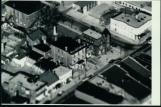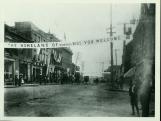1
Bowmanville's story started with the arrival of the first settlers in 1794. The Conant, Burk and Trull families traveled from the United States of America and personally selected this area to call home. They were attracted to this land by its rich soil for farming, thick forests for hunting and many creeks for water mills.By 1817 the Kingston Road was completed making passage from Kingston to York possible. This highway also made it possible for a village by the name of Darlington Mills to evolve. By c.1830 locals began referring to the village as Bowmanville, fondly named after store/land owner and money lender Charles Bowman of Montreal.
Bowmanville was incorporated as a village in 1852 and as a town in 1858. Since then the population has steadily grown reaching 10,000 in the 1970s, approximately 20,000 in the 1980s, 25,000 in the 1990s and is today over 30,000 residents strong.
2
Aerial photograph of Downtown Bowmanvilleearly 1960s
King Street, Bowmanville
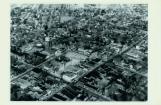 Credits:
Credits:Clarington Museums and Archives
4
The area of the downtown on Temperance Street between Church Street and King Street was known as Market Square. Bordered by the Town Hall, the post office and the fire hall people met here to debate, and celebrate. It was here that the residents celebrated historical events such as Queen Victoria's Diamond Jubilee on May 24, 1897 and later the Coronation of her son Edward VII.5
Queen Victoria's Diamond Jubilee24 May 1897
Temperance Street, Bowmanville
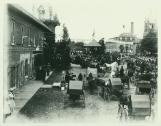 Credits:
Credits:Shaw Photograph Collection, Clarington Museums and Archives
6
Queen Victoria's Diamond Jubilee24 May 1897
Temperance Street, Bowmanville
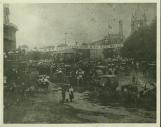 Credits:
Credits:Clarington Museums and Archives
7
The Coronation of King Edward VII1902
Temperance Street, Bowmanville
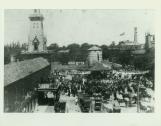 Credits:
Credits:Shaw Photograph Collection, Clarington Museums and Archives
8
Since the beginning of Bowmanville's history parades have travelled up and down King Street. To this day King Street continues to be the main passage through town and the centre of activity.9
Parade on King Streetearly 1900s
King Street, Bowmanville
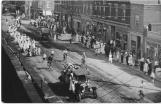 Credits:
Credits:Shaw Photograph Collection, Clarington Museums and Archives
10
Sons of Englandearly 1900s
King Street, Bowmanville
 Credits:
Credits:Shaw Photograph Collection, Clarington Museums and Archives
11
Early parades were staged for military men embarking to or arriving from war, as a way for the community to thank the men and women involved. Parades were also used by the town to signal the beginning of a community celebration, such as Victoria Day, or a Street Fair.12
136th Battalion Paradingcirca 1916/17
King Street, Bowmanville
 Credits:
Credits:Shaw Photograph Collection, Clarington Museums and Archives
14
Woman's Institute FloatAugust 1937
Wellington Street, Bowmanville
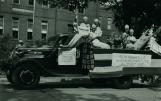 Credits:
Credits:Shaw Photograph Collection, Clarington Museums and Archives
